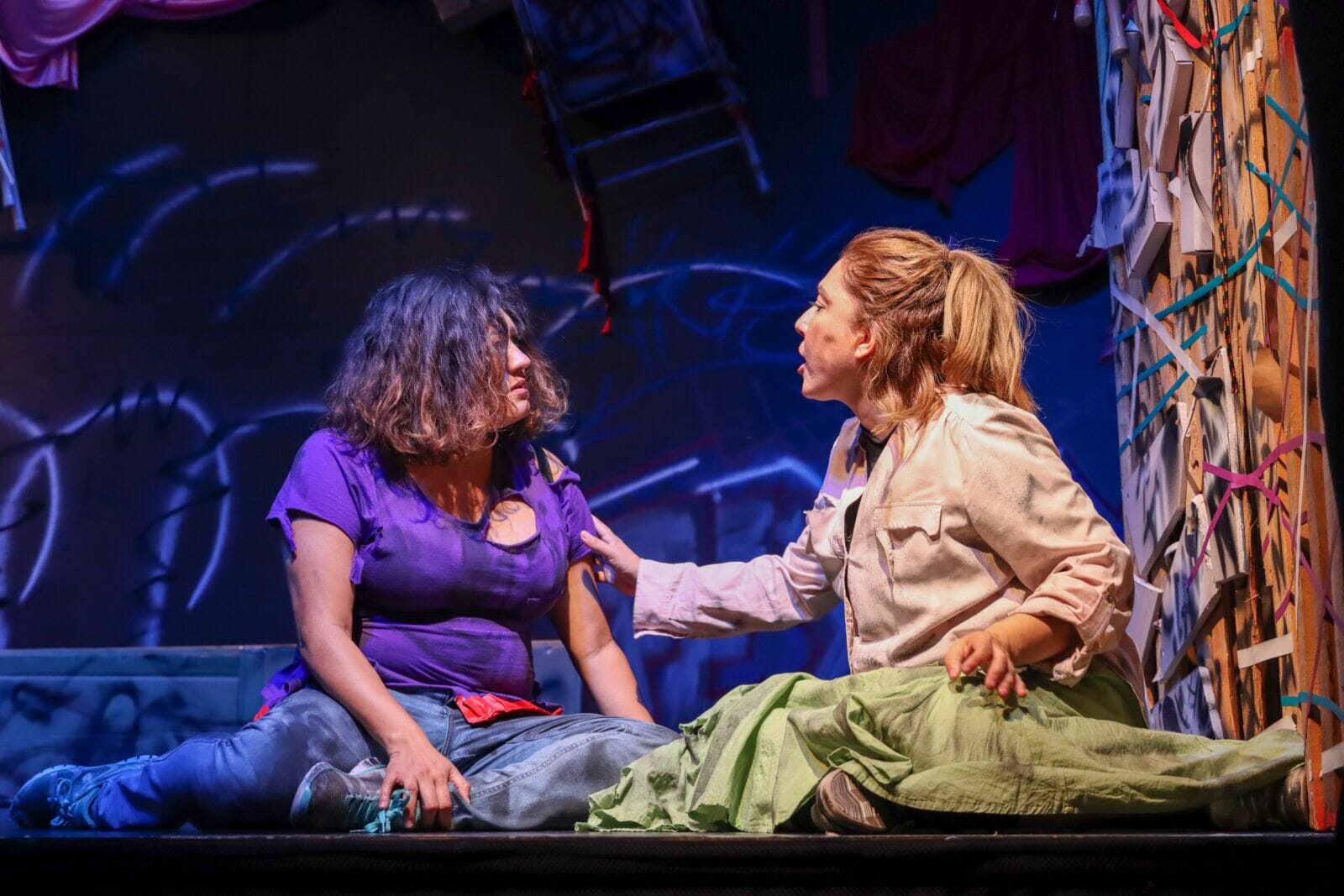The stage is pitch black. A spotlight shines on a corner, illuminating for the audience the scene of a filthy basement. A woman in dirty, ragged clothes enters, and after her come four more. All have been kidnapped.
These brutal true stories of human trafficking are re-created in the play “Luna Rojiza,” which was written and produced by the west Phoenix theater company Teatro Meshico.
READ ALSO: Should local governments invest more in arts education?
Because of COVID-19, this is the first show for Teatro Meshico since 2019. Like so many other arts groups and organizations, the company – which also offers classes in literature, poetry and baile folklorico – went dark during the pandemic. And the comeback was anything but certain for Meshico, which even in good times relies on a patchwork of funding to stay alive.
But this time there was help through the American Rescue Plan Act, a $1.9 trillion stimulus package passed in March 2021 to combat the negative impacts of COVID-19 on the economy and public health. The act gave Teatro Meshico and other small arts groups, many in marginalized communities, a boost through grants allocated by Phoenix’s Office of Arts and Culture.
“For the first time ever, we receive that kind of support. Our current production is created from that support. The funding makes us much more calm,” said Mario Zapien, executive director of Teatro Meshico, who wrote and directed “Luna Rojiza.”
With the help of the company’s $7,500 grant, “Luna Rojiza” had a two-weekend run in October and sold out every night.
The pandemic dealt arts and culture organizations a hard blow as restrictions in many major cities limited in-person events. An analysis of arts and culture organizations impacted by COVID-19 shows a big dip in revenue for performing arts, as well as widespread layoffs.
Well into 2021, many organizations and individual artists still are recovering. A report by Americans for the Arts, an advocacy and research organization for the arts, shows that nonprofit art employment remains three times lower than the average for all nonprofit organizations.
“Artists felt it in their pockets, and we missed it in our hearts,” said Donna Valdes, executive director of Xico Inc. gallery on Roosevelt Row, another grant recipient. “We missed the emotional connection that only the arts can provide. Art stimulates the senses; without the physical experience, we had to work on alternate ways to foster this experience.”
Phoenix’s Office of Arts and Culture allocated $2.65 million to the Nonprofit Arts and Culture Stabilization Grants program for 88 local organizations.
Despite being the fifth-largest city in the country, Phoenix has just under $1 million for annual grant programs. But with COVID-19 stimulus funds from 2020 and 2021, the office could help organizations, plus make grants of $500 to $2,500 to 210 individual artists.
“We’re just able to push out that money to our community to make sure that they don’t have to shut down,” said Sarah Léon , grants and community engagement director at the Office of Arts and Culture. “So it’s more money than we’ve ever really worked with, ever, and that is historical.”
Teatro Meshico is a Spanish-language theater troupe in the Maryvale neighborhood of west Phoenix. In addition to theater classes and performances, Teatro Meshico hosts literature and writing workshops, and musical performances that recently have been done virtually.
This is the first time Teatro received significant funding. When COVID-19 restrictions were stricter, the theater nearly collapsed.
“We had to stop completely. There was no movement,” Zapien said. “During the pandemic, we didn’t receive any help.”
Apart from teaching discipline and artistic expression to his students, Zapien wants them to give back to the community.
Theresa Vazquez, a founder and actress at Teatro Meshico, agrees with Zapien. “ We need more of our culture, more of our Latin American identity.“
But even before the pandemic, Latinx arts and culture saw a downward trend, with funding for the Hispanic arts falling 51% from 2016 to 2019, according to a report by Hispanics in Philanthropy, a group that works to grow philanthropy in the Latino community.
The Office of Arts and Culture worked to diversify the arts and culture organizations accepted for the stabilization grants. Grant money was provided to various Black-led, Indigenous and Latinx groups.
“It’s really important to invest as a community in the artist, in the creative people of this city to tell the story of this city,” Leon said, “and we also know this is a very diverse city with a very significant history, and arts and culture tells that narrative.”
For Celia Ramos, a former theater student and current communications specialist with Prensa Arizona, this is the Teatro mission:
“This is a theater to protest and bring awareness, that looks to move and in some cases disturb spectators and have them question themselves and develop self-criticism.”
Teatro plans to continue its theater and virtual literature classes in 2022.
“There’s a huge importance for art in Phoenix,” Zapien said. “Whoever is producing art, look for the support you need. The most important thing is to never give up because the community needs every kind of art.”
Story by Christian Serrano, Cronkite News




